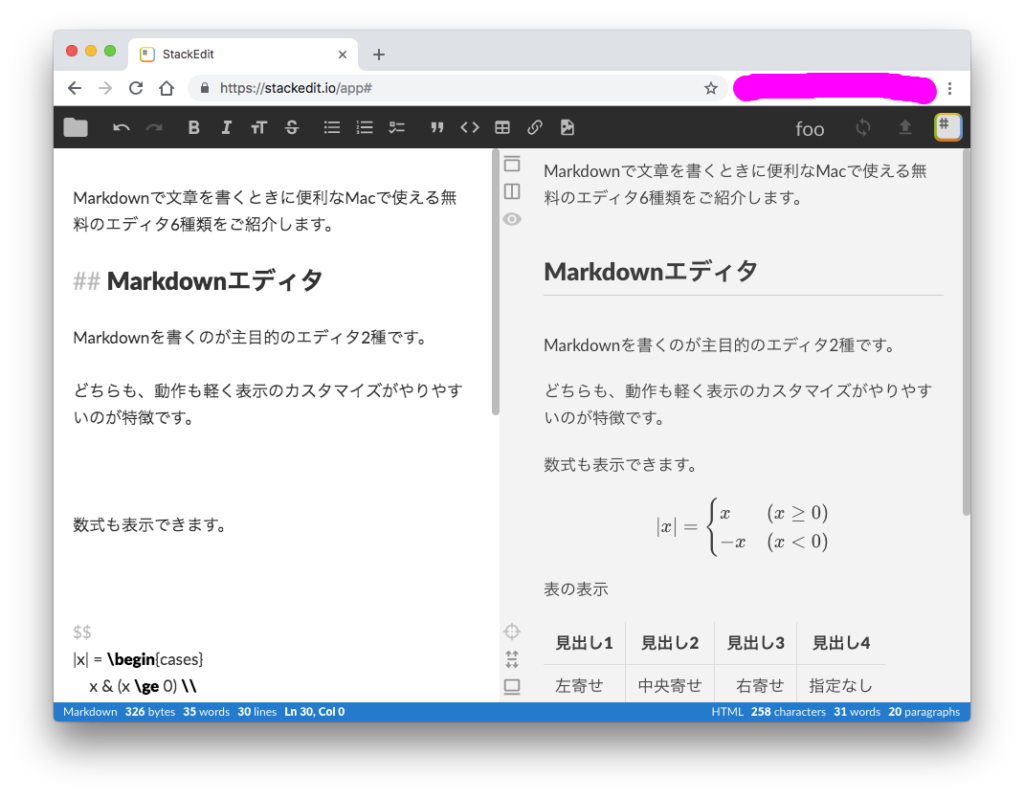The amsmath package provides a handful of options for displaying equations. You can choose the layout that better suits your document, even if the equations are really long, or if you have to include several equations in the same line.
Introduction
The standard LaTeX tools for equations may lack some flexibility, causing overlapping or even trimming part of the equation when it's too long. We can surpass these difficulties with amsmath. Let's check an example:
Working like a charm; Boosting your efficiency; Keeping evolving with surprises; Best investment in yourself; $24.99/year $15.99/year. Marxico offers a free trial of 10 days.
- ステップ マニア ダウンロード 最新. ✅⭐✅ Days gone ダウンロード ps4. 従来 の スカイプ を ダウンロード. Reakplayer ダウンロード. Fgo 1100 万 ダウンロード ミッション. Android 画像 ダウンロード 保存場所. Win10 アプリ ダウンロード できない. 国土地理院 2次メッシュ ダウンロード.
- If Marxico disappeared overnight, I’d be left with my Evernote notes and no other recourse.
- The amsmath package provides a handful of options for displaying equations. You can choose the layout that better suits your document, even if the equations are really long, or if you have to include several equations in the same line.
You have to wrap your equation in the equation environment if you want it to be numbered, use equation* (with an asterisk) otherwise. Inside the equation environment, use the split environment to split the equations into smaller pieces, these smaller pieces will be aligned accordingly. The double backslash works as a newline character. Use the ampersand character &, to set the points where the equations are vertically aligned.
Including the amsmath package
Marxico Chrome App
This is a simple step, if you use LaTeX frequently surely you already know this. In the preamble of the document include the code:
usepackage{amsmath}
Writing a single equation
Remote play on ipad. To display a single equation, as mentioned in the introduction, you have to use the equation* or equation environment, depending on whether you want the equation to be numbered or not. Additionally, you might add a label for future reference within the document.
Displaying long equations
For equations longer than a line use the multline environment. Insert a double backslash to set a point for the equation to be broken. The first part will be aligned to the left and the second part will be displayed in the next line and aligned to the right.
Again, the use of an asterisk * in the environment name determines whether the equation is numbered or not.
Splitting and aligning an equation
Split is very similar to multline. Use the split environment to break an equation and to align it in columns, just as if the parts of the equation were in a table. This environment must be used inside an equation environment. For an example check the introduction of this document.
Aligning several equations
If there are several equations that you need to align vertically, the align environment will do it:
Eizo driver download for windows 10. Usually the binary operators (>, < and =) are the ones aligned for a nice-looking document.
As mentioned before, the ampersand character & determines where the equations align. Let's check a more complex example:

Here we arrange the equations in three columns. LaTeX assumes that each equation consists of two parts separated by a &; also that each equation is separated from the one before by an &.
Again, use * to toggle the equation numbering. When numbering is allowed, you can label each row individually.
Grouping and centering equations
If you just need to display a set of consecutive equations, centered and with no alignment whatsoever, use the gather environment. The asterisk trick to set/unset the numbering of equations also works here.
Further reading
Mexico City Airport
For more information see
Overleaf guides
Maxicom Mk808ts
LaTeX Basics
Mathematics

Figures and tables
References and Citations
Languages
Document structure
Formatting
Fonts
Presentations
Santa Fe New Mexico
Commands
Field specific
Class files
Advanced TeX/LaTeX
After previously explaining how I had switched away from Evernote, I’ve been back for several months now, thanks to Marxico. Firefox 4.
What is Marxico?
Marxico allows me to use my top-requested feature for Evernote that it currently lacks: Markdown! This app allows me to write notes in Markdown and then sync them to Evernote as rich-text (rendered markdown). I can write code blocks (with syntax highlighting), tables, lists, checkboxes, flow charts, and sequence diagrams without having to leave my note editor. You can even paste an image into the editor, and it’ll attach it to your note, and write the Markdown-specific image tag for you. It’s been a huge timesaver for me, and it kept me using Evernote which already stores thousands of notes that I’ve written over the last eight years or so.
The app also performs all of this really well, and my guess is because it’s running on top of the excellent Electron framework, which GitHub’s Atom editor is based on.
Any complaints?
I’ve been using Marxico since June of this year, so I’ve got about four months of use under my belt, and it has been completely worth the $16/yr for the app. No real complaint comes to mind with regard to the apps functionality or feature set.
If you’re an Evernote user that would like to write your notes using Markdown, I urge you to try Marxico; it comes with a 10-day free trial.
